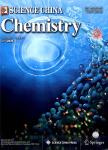Thermal expansion behaviors of Mn(Ⅱ)-pyridylbenzoate frameworks based on metal-carboxylate chains
Thermal expansion behaviors of Mn(Ⅱ)-pyridylbenzoate frameworks based on metal-carboxylate chains作者机构:MOE Key Laboratory of Bioinorganic and Synthetic ChemistrySchool of Chemistry and Chemical Engineering Sun Yat-Sen University Department of Chemistry Shantou University
出 版 物:《Science China Chemistry》 (中国科学(化学英文版))
年 卷 期:2014年第57卷第3期
页 面:365-370,1-3页
核心收录:
学科分类:081704[工学-应用化学] 07[理学] 08[工学] 0817[工学-化学工程与技术] 070303[理学-有机化学] 0703[理学-化学]
基 金:supported by the National Basic Research Progrem of China(2012CB821706) the National Natural Science Foundation of China(21121061 and 21225105)
主 题:coordination polymer thermal expansion framework flexibility topology
摘 要:Solvothermal reactions of MnCl2with pyridylbenzoic acids gave three-dimensional metal-carboxylate frameworks(MCFs),named MCF-34,MCF-43,and MCF-44,based on one-dimensional Mn-carboxylate *** crystal structure,stability,porosity,and framework flexibility of the new compound MCF-44 were studied in detail and compared with its *** on their shapes and the bridging angles of the ligands,these compounds possess different network connectivities and *** the pyridylbenzote ligands and Mn(II)ions as,respectively,3-and 6-connected nodes,they resemble either the anatase(ant)or rutile(rtl)polymorph of ***-temperature single-crystal X-ray diffraction studies revealed large thermal expansion coefficients for these compounds,which are probably related to the relatively flexible edge-sharing polyhedral structure of their Mn-carboxylate ***,the new compound MCF-44,with its highly porous rtl structure exhibits the largest thermal expansion coefficienct among the coordination polymers reported so far.



